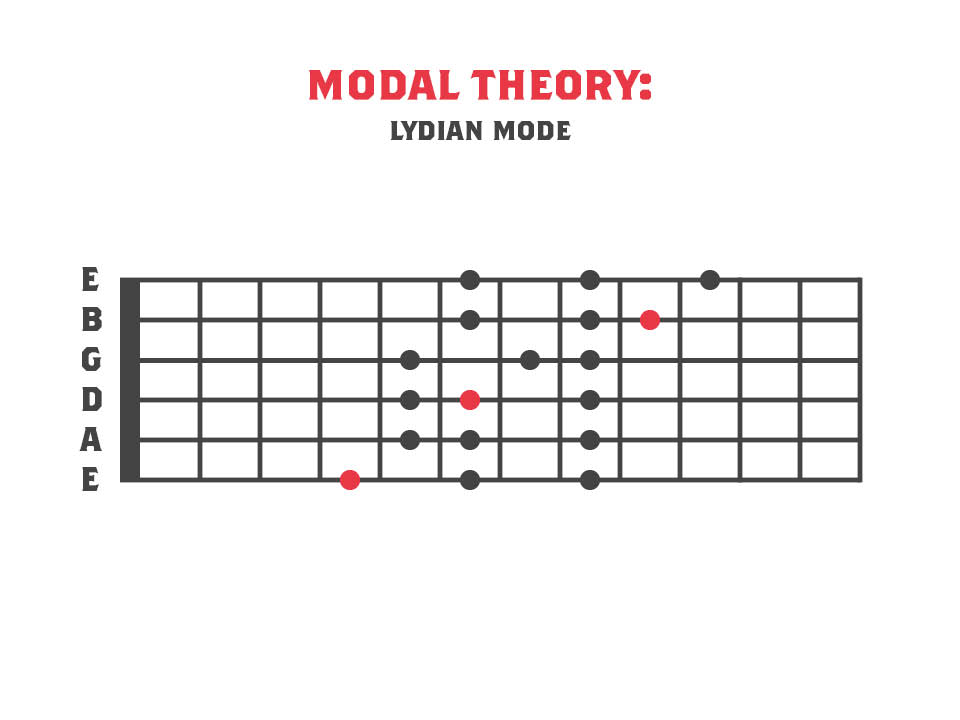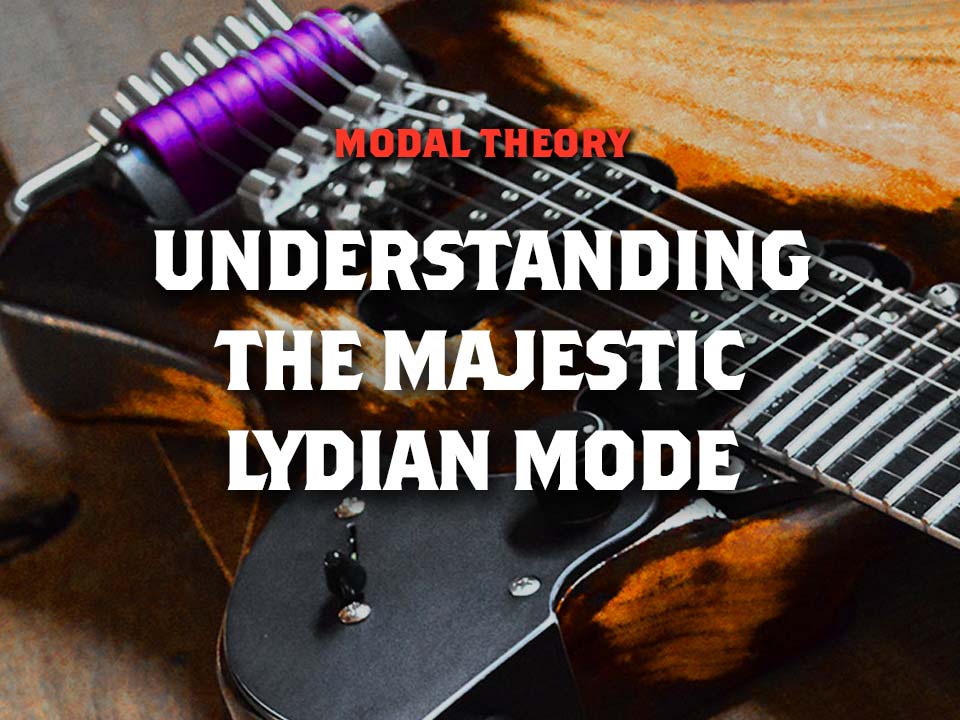Lydian is the 4th mode of the major scale. In the key of C major we get F Lydian. The notes of Lydian are the same as its related major scale, however the lydian mode has an augmented 4th, also referred to as a #11.
Despite the root chord of the mode being a major 7, the lydian mode also has a tense and mysterious quality due to the #11. Since there is a whole-tone between the 3rd and 4th notes we get a semitone between the 4th and 5th.

Here is the first octave ascending and descending:
The notes of F Lydian are:
F – G – A – B – C – D – E – F
Lydian Mode Example
Let’s play a progression using Dm, GMaj, Em and FMaj.
On the second time through we’ll replace the Dm with Bmin7b5. Since B is the #11 in relation to F this will bring out the Lydian sound a bit more. We’ll also add an Am7 before the G and then move quickly to C Major before resolving to F.
So the full sequence is:
Dm, G, Em, F,
Bmin7b5, Am7, GSus4, C, F.
In the first bar the G Major wants to resolve to C. (Dm – G – C would give us a II – V – I progression). Instead of C I’m playing an Em chord which moves nicely to the F Major.
In the second bar the G is a passing chord in order to create a sense of movement to the C. We don’t want the G – C to feel too much like a V – I progression. To avoid this the G is played as a Sus4 to make it sound less dominant. The C then leads back to the F.
Whilst we haven’t used the #11 interval on our F chord we can make use of it in the melody whilst playing over the F Major chord. The #11 note in relation to F is the note B.














No Comment